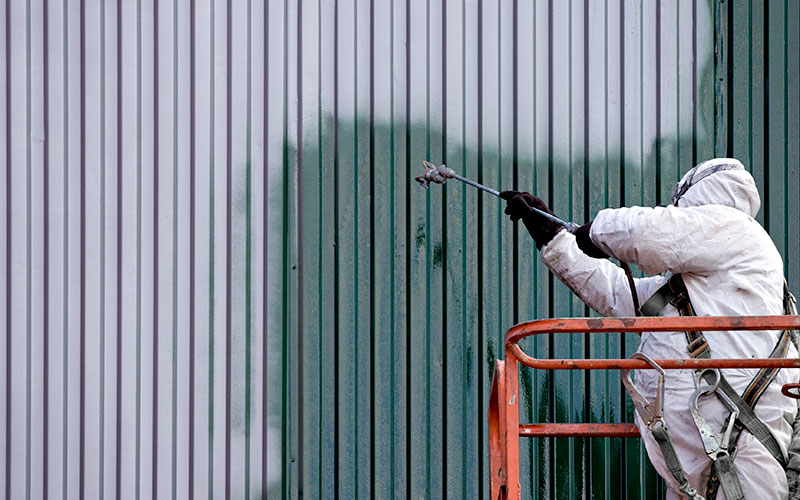Painting the exterior of your home is a significant investment, so you will want to make sure it will look good for many years to come.
The finished look of a job is critical, but that the paint protects the priority. To achieve this goal, the painter needs basic knowledge of how the elements work against paint finishes and surfaces and, most significantly, what rain will do and how and where it travels. Moisture is the most significant cause of paint failure, as we’ve discussed, and once a breach has occurred, moisture and sunlight combine to damage the exposed substrate.
Rain Damage to Exterior Wood
When rain breaches a painted surface, even in the slightest way, the wood becomes wet. Moisture doesn’t escape the same way it enters. The sun vaporizes the humidity, which produces blisters, and pulls it out, taking the paint with it. In the photos shown here, the extent of damage was not apparent before prep. Although the color looked good, it peeled right off. I discovered this through sounding (tapping with my finger). The rain was entering through the window track and sill meeting, a flawed design and contractor failure. All the sills exposed to rainfall suffered damage because of these failures.
Exterior Painting Tips
We’ve discussed two of the more significant impediments to long-term paint protection. The key to preventing these problems lies primarily in preparation, time spent, and the use of the proper materials.
• Acceptable Moisture Content. Acceptable moisture content is between 15% and 18%, depending on the product, and can be determined using a moisture meter. Wood exceeding those levels needs time to dry. For example, a pressure-washed deck requires 2-3 good drying days before treatment. If wood is drying out and rain is due, wrap it in plastic until the rain passes.
• Surface Preparation. To remove dirt and mold or algae, it is good practice to clean surfaces first, whether by hand or pressure washer, with a formula of bleach and trisodium phosphate. A pressure washer will remove much old scaling paint. Alternatively, use a pull scraper to remove the loose paint, and use both hands when scraping. Also, use the scraper and a knife to remove old caulk. Next, sand the whole surface with a minimum of 80-grit sandpaper, caring for the exposed wood.
• Priming Bare Wood. All exposed exterior wood needs a coat of primer. The primer coat provides the primary bond to the substrate for all subsequent coats. I try to avoid multipurpose primers on exterior work, preferring to use wood and metal primers designed for specific substrates. The key to applying a successful primer coat is ensuring that the wood absorbs it.
• Caulking and Puttying. After our surface is primed (never before), we want to caulk any openings and putty any holes. We don’t want to allow moisture access through gaps in the trim or depressions where it can puddle. On new work, I generally caulk anywhere two pieces are joined. What might look tight now might not after settlement and contraction. On all work, I constantly reinforce corners where verticals meet horizontals. These corners are critical. While latex paint is elastic, it only handles surface tension, and caulking provides the necessary elasticity for joints and splits. Always use a high-quality caulk and observe color-ready times.
• Applying Exterior Paint. The brush technique is the same for interior and exterior paint jobs. Avoid painting in direct sunlight. All final qualities of a finish, from color to sheen to adhesion and more, are a function of drying times. Anything that hastens drying will affect the paint’s qualities. Drag marks will also mar the finish. Let the sun chase you around the house. Whether using oil or latex, always purchase the best quality, you can afford and follow the manufacturer’s specifications.

